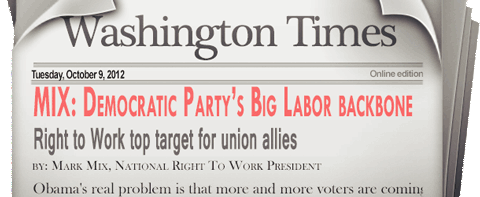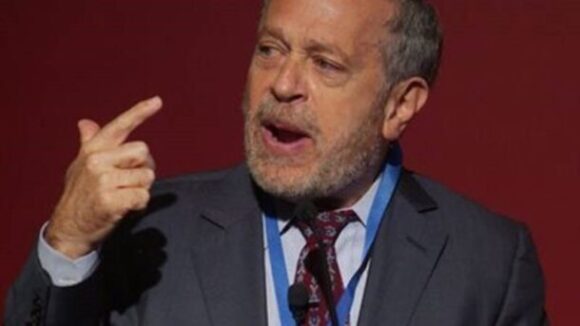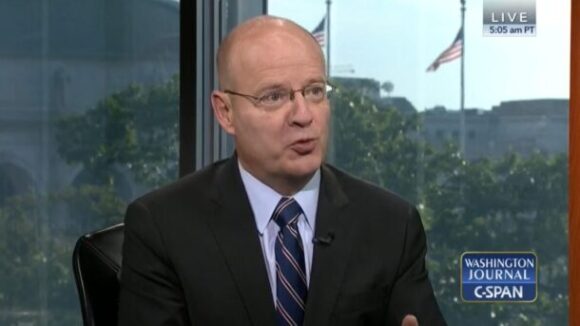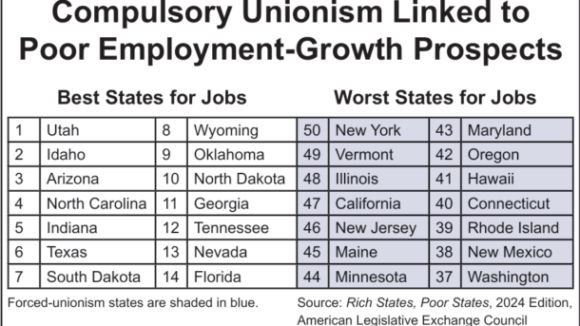Will Team Biden Weaponize Workers’ Pensions?
Big Labor abuse of worker pension and benefit funds as a means of advancing union bosses’ self-aggrandizing policy objectives is a familiar phenomenon.
From the Washington Times:
As President Obama and Vice President Joseph R. Biden campaign for re-election, they feel compelled time and again to remind anyone who has gathered to hear them that America’s economic troubles started well before they got to the White House.
[media-credit name=” ” align=”alignright” width=”480″] [/media-credit]American voters surely know that. The Obama ticket’s real problem is that more and more voters are coming to understand that the current administration has no clue about which policies would help the national economy, and workers in particular, get back on track.
[/media-credit]American voters surely know that. The Obama ticket’s real problem is that more and more voters are coming to understand that the current administration has no clue about which policies would help the national economy, and workers in particular, get back on track.
Emblematic of the president’s befuddlement was his jibe against Right to Work laws at a Labor Day rally in Toledo, Ohio. Right to Work laws make it illegal to deny an applicant a job or to fire an employee simply for refusing to pay dues or fees to an unwanted union. Mr. Obama insisted without offering any evidence that individual freedom of choice over union affiliation is somehow bad for wages and salaries. At a campaign event in Detroit the same day, Mr. Biden repeated basically the same canard and vowed that the Obama administration would block national Right to Work legislation.
What are the facts about Right to Work and employee compensation?
Nationwide, inflation-adjusted U.S. Commerce Department data show that wage and salary disbursements to private-sector employees grew by just 1.8 percent from 2000 to 2010. That’s the smallest gain for any decade since the Great Depression.
But regional data show that employees and job seekers in the 22 states that had Right to Work laws on the books at the beginning of the millennium fared far better than average, with real private-sector wages and salaries increasing by 8.6 percent, or nearly five times the national average.
Of the 22 Right to Work states, 19 had private-sector wage and salary growth greater than the national average over that period. Meanwhile, 12 of the 13 states that suffered declines lacked Right to Work protections for employees. (Because Indiana did not adopt its Right to Work law until February, it is counted here as a forced-union state.)
Some Big Labor apologists concede that wage and salary growth is far more rapid in Right to Work states but insist that voluntary unionism is nevertheless a bad idea because the average employee in a forced-union state supposedly has higher wages.
Unfortunately for union propagandists, workers in forced-union states suffer from lower pay as well as slower-growing wages once interstate differences in cost of living are taken into account. Adjusting for regional differences in living costs with the help of indices created by the nonpartisan Missouri Economic Research and Information Center, the average wage and salary compensation per private-sector employee in Right to Work states in 2010 was $33,893, slightly higher than the $33,789 average for forced-union states.
It is understandable for Mr. Obama to ignore the economic facts about Right to Work and simply take union bosses’ word regarding its impact. Mr. Obama and Mr. Biden know, as Teamster czar Jimmy Hoffa Jr. bluntly put it in a recent TV interview, that Big Labor is “the backbone of the Democratic Party.” Mr. Hoffa went on to boast, quite accurately: “We have the organization. We have money. We have boots on the ground. And it’s going to show this time in the election.”
Team Obama also knows that federal and state laws empowering union officials to force employees to accept monopoly union “representation” and pay union dues are the reason Big Labor is such a cash-rich political powerhouse. That’s why the Obama camp is determined to expand union bosses’ special privileges rather than roll them back.
To use Mr. Obama’s own words, his opposition to Right to Work “isn’t about economics; this is about politics.” That’s why the American people should never trust what he has to say about labor policy.
Mark Mix is president of National Right to Work.

Big Labor abuse of worker pension and benefit funds as a means of advancing union bosses’ self-aggrandizing policy objectives is a familiar phenomenon.

What impact does handing a union monopoly power to deal with your employer on matters concerning your pay, benefits, and work rules have on your pay?

Wherever Big Labor wields the power to collect forced union dues, union bosses funnel a large share of the confiscated money into efforts to elect and reelect business-bashing politicians. Employment growth tends to lag as a consequence.